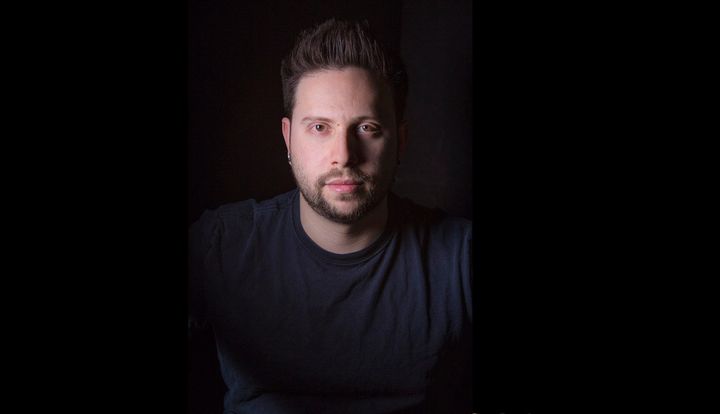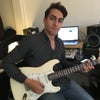
Jeremy Nathan Tisser is a diversely talented composer and name to keep an eye on. He is most known for his work on “Raw Data” the top selling virtual reality game by Survios. His other upcoming film projects include ACTOR FOR HIRE starring Jesse Boyd (THE WALKING DEAD), Jesse O’Neil (TED 2) and Najee DeTiege (POWER RANGERS SAMURAI), which will be released on VOD in January. The score features a jazz quartet along with a new song co-written by Tisser, performed by TJ Wilkins from The Voice. Learn more about Jeremy through reading our interview with him below.
What projects are you currently working on? Which are airing or about to release?
I am currently writing the score to the virtual reality game “Raw Data”, by game developer Survios. Raw Data is currently available as an “Early Access” edition on Steam for the HTC Vive only. The Early Access release happened on July 14, and Raw Data not only became the first VR game to reach the #1 Top Seller spot in Steam’s history, but also became the first VR game to break $1,000,000 in sales in one month. However, the game is currently still in progress, and I am still writing tons of new music for it. It should be out sometime in 2017, but I don’t know much more than that. The game is up for 2 Proto Awards, and won awards at both GDC 2016 and E3 2016.
What is the coolest or most unique sound or instrument that you have used in a score?
I would definitely have to say that the Blaster Beam is the coolest AND most unique instrument I’ve ever used in a score. I actually just recorded it a couple weeks ago to use across my score for “Raw Data”. The blaster beam is a 17 foot long chunk of metal with a bunch of piano strings, and you bang the strings with either a mallet or a large metal tube on the various pitches. The lowest note is the C an octave BELOW the bottom note of a piano. It basically sounds like a bass on steroids with a giant metal twang to it. All of the Trekkies out there will recognize this instrument from being a featured sound in the score to the original Star Trek: The Motion Picture, as well as 7 more Trek films and 2 or 3 Alien scores.
Who are some of your dream collaborators?
Obviously Steven Spielberg… But let’s get realistic for a second. I would absolutely love the opportunity to collaborate with people like JJ Abrams, Steven Moffat, Ron Moore, Bryan Fuller, Alex Kurtzman, etc. But my dream studio to write scores for would be Pixar. I’m basically a huge sci-fi, adventure and animation nut. Anything involving space makes me happy.
What do you wish you knew in the beginning of your career about the entertainment industry or being a professional composer, that you know now?
I’m not entirely sure to be honest. I’ve always been the guy who sits quietly in the classroom and absorbs as much as he cans, then goes out and applies it. I’d say the hardest thing to truly grasp is how deep of a commitment the job require. I had always been warned about and told what the journey entails, and how long it can take to “make it”, but it’s just one of those things you don’t fully understand until you’re in the middle of it. The journey is a marathon, not a sprint.
When you are given a project or scene to score, what is your process like? How do you decide how to score something?
It really varies from project to project, and scene to scene. Generally speaking, I am one of the few people in this industry that still prefers to write at the piano with pencil and paper. However, even though video game schedules allow for it, film and television schedules do not. My method has adapted to more of blend between the piano and my computer. I’ll watch a scene, put my markers in the computer, and begin to create a tempo map for the scene. Then, I’ll write out the tempo map on my sketchpad with notes along the top of what I want to do at which points. Next, I’ll go to my piano and begin working out the themes, chord progressions, musical ideas, motifs, etc, and I will create a basic “skeleton” of my cue. I then go to my computer and mockup what i’ve done, and let the visuals and the music inspire and dictate the rest of the cue. From this point, the cue usually writes itself.
Who are some of your musical influences?
If we’re talking strictly film music, Jerry Goldsmith, John Williams, and James Horner are my heroes. Some of my other favorite bands/composers include Tower of Power, Killswitch Engage, Dream Theater, Meshuggah, Thrice, Stevie Wonder, Stravinksy, Respighi, Rimski-Korsakov, and others.
How can we best follow your career?
Feel free to visit my website for more information and samples of my music at www.jeremytisser.com. You can also hear more of my music on my SoundCloud account at https://soundcloud.com/jeremy-tisser. And finally, follow my Instagram to see more of who I am at @JNTMusic.

